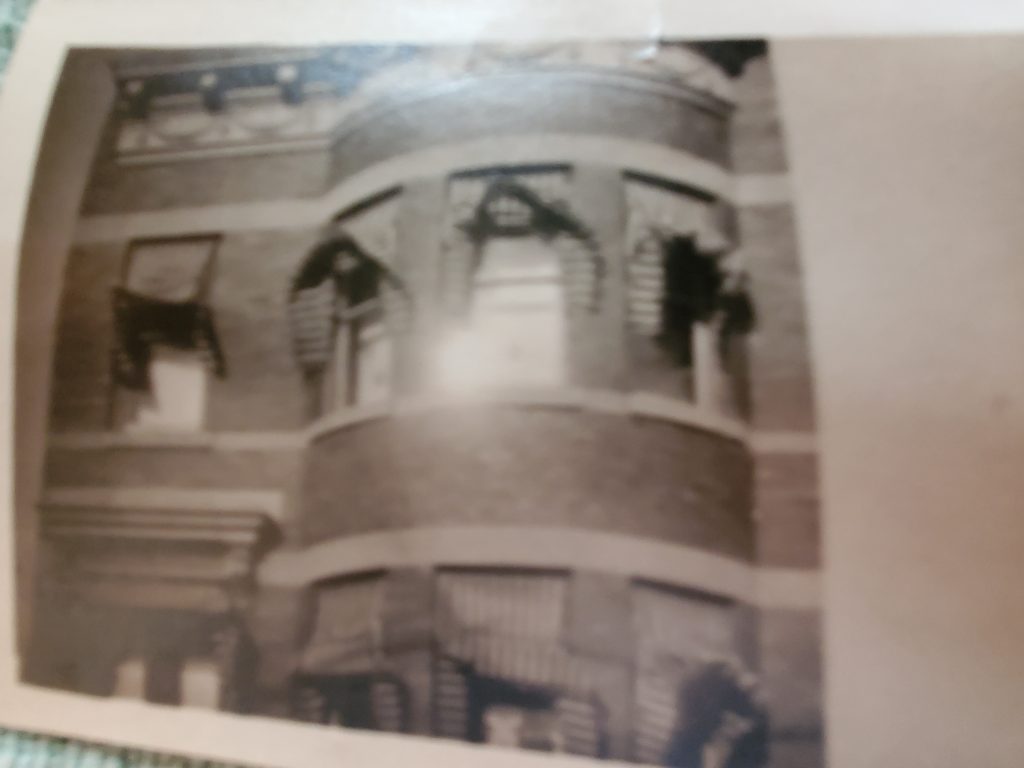
The county of Queens became the burial grounds for New York City. Just take I495, the Long Island Expressway, toward the Queens-Midtown Tunnel, and you will see, from an elevated highway, two of the large Catholic and Jewish cemeteries within the city limits. Further East smaller cemeteries can be found in Middle Village, the location of our flower farm is nestled between the All-Faith Cemetery (formerly Lutheran Trinity Cemetery) and St. John’s Catholic Cemetery. Tiny Mt. Olivet Cemetery could be found where 69th Street neared Maspeth.
It’s a very, very old custom to put flowers on the graves of loved ones. Hence, the need to provide flowers to mourners.
Back in the early half of the 20th Century there was a lot of open undeveloped land in Queens. My grandparents, Lottie and William Frank, after many years of hard work and scrimping and saving, bought up enough lots to comprise a quarter of a city block.
Grampa spent a few years working as a grave digger, while Gramma, a product of a haute couture school in her native Warsaw, make dresses and suits and coats and hats for the Middle Village ladies and their friends. Word spread. You could show her picture in the newspaper or magazine, and she could copy it.
Now, when my grandfather lived in Poland, Poland didn’t exist. It had been partitioned between Germany and Russia, as a result of one of the perennial, stupid (pardon this editorial comment) wars that persisted in Europe at that time. He lived in the German occupied sector and spoke German as well as Polish.
His fellow grave diggers told him to change his name from the Polish, Wasneski, to a German name and start a small business. Grampa had been a foreman on a sugar beet farm in Poland and knew farming. The cemeteries, as he observed, needed flowers. So, the Florist and Gardener, William Frank, started the flower farm at 62-15 69th St. in Middle Village.
Grandma and Grandpa had been living in a house in Elmhurst. Their habit was to save every cent, and when they had sufficient funds, they would buy another house and rent it or flip it. This became so successful that they were able to loan money, like a mortgage, to others who wanted to buy property. For many years relatives rented these houses.
Starting the business at the large flower farm property made it more convenient to live there, and so in 1910 Grampa started to build the house that stands there today, and that I grew up in.
The style of the house which is depicted in the iconic photo I use for this series of essays was very popular at that time, and many, many houses like it can still be seen in Ridgewood, Brooklyn and other parts of Queens and the Bronx. But our house stands alone. The others are attached or semi-attached in whole blocks. Block after block, making up a neighborhood.
The development of the land surrounding our flower farm was chaotic and haphazard, to say the least. The streets alongside the house were barely paved and led to unpaved lanes. Other florists developed their own businesses. All around us cold frames and greenhouses grew up like little cities of their own.
Moving down the dirt paths, one would come across “the lots”. This was a large tract of swampy undeveloped land that went for a half-mile before one came across another development of houses. There was evidence that this may have been farmland at one time or that a developer unsuccessfully attempted to build some houses. The neighborhood kids explored, playing and learning all sorts of things in “the lots”.
The houses on either side of 62-15 were primarily old-fashioned wood framed dwellings, some with open cesspools. Our community was surrounded by the more populous villages of Maspeth, where all the shops were as well as the elementary school and the library and a few churches. Further North were Forest Hills and Rego Park, veritable centers of culture and civilization.
NEXT TIME: What’s it like to work in a cemetery?

